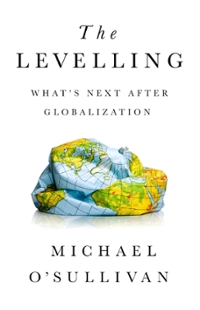Question
. In a perfectly competitive market, if supply and demand fully reflect all of the costs and benefits associated with production and consumption, then total
. In a perfectly competitive market, if supply and demand fully reflect all of the costs and benefits associated with production and consumption, then total economic surplus is maximized when:
price controls keep prices low enough that most consumers can purchase the item.
consumer surplus and producer surplus are equal.
consumer surplus is greater than producer surplus.
the market is in equilibrium.
2. Suppose a market is in equilibrium. The area below the market price and above the supply curve is:
consumer surplus.
the loss in total economic surplus.
producer surplus.
total economic surplus.
3. Barriers to entry are forces that:
limit consumers from purchasing new products.
limit new firms from joining an industry.
limit the government from intervening in markets.
promote a more efficient allocation of resources across the economy.
4. According to the theory of the invisible hand, if buyers and sellers are free to pursue their own self-interest, the result often will be:
an efficient allocation of resources.
the exploitation of productive resources.
an missing allocation of resources.
an equitable allocation of resources.
5. If resources are misallocated in a perfectly competitive market, then in the long run profit opportunities will:
bring about a less efficient allocation of resources.
not bring about a reallocation of resources unless firms are subsidized.
bring about a more efficient allocation of resources.
not bring about a reallocation of resources unless there is government regulation.
6. Mary Jane is willing to babysit for $6 an hour. Her neighbor has asked her to babysit for $8 an hour. Assuming Mary Jane accepts the offer:
her economic rent will be $2 per hour.
her economic profit will be $8 per hour.
her consumer surplus will be $2 per hour.
her accounting profit will be $8 per hour, and her economic profit will be $0 per hour.
7. A price ceiling that is set below the equilibrium price will result in:
a shortage of the good.
higher producer surplus.
higher total economic surplus.
a surplus of the good.
8. Efficiency is an important goal because when markets are efficient:
there are more resources available to achieve other goals.
there is less income inequality.
there is no need for government intervention in the economy.
the poor benefit more than the wealthy.
9. Which of the following is NOT an example of an explicit cost?
The salaries paid to the managers who help run the business.
The income the owner could have earned in his or her next best employment opportunity.
The rent the owner pays each month to lease office space.
The overtime wages paid to workers.
10. If the government provides a subsidy of $500 per ton, the equilibrium price of sugar will be ______ per ton, and the equilibrium quantity will be ______ tons per day.
$1000; 8
$1500; 8
$1000; 12
$1500; 12
11. If you were to start your own business, your implicit costs would include the:
interest that you pay on your business loans.
opportunity cost of the time you spend working at the business.
profit you earn over and above your normal profit.
rent that you have paid in advance for the use of a building.


Step by Step Solution
There are 3 Steps involved in it
Step: 1

Get Instant Access to Expert-Tailored Solutions
See step-by-step solutions with expert insights and AI powered tools for academic success
Step: 2

Step: 3

Ace Your Homework with AI
Get the answers you need in no time with our AI-driven, step-by-step assistance
Get Started


